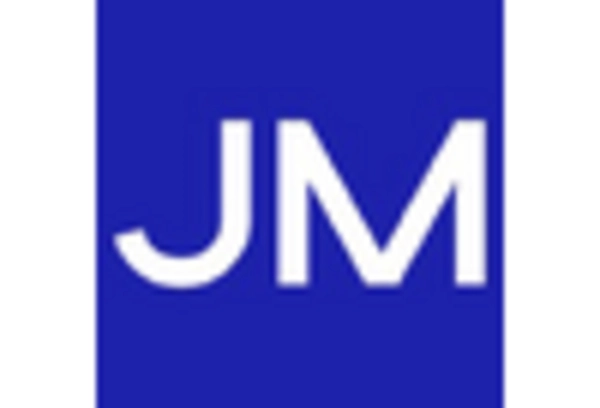Rising Environmental Awareness
Growing environmental awareness among consumers and industries is significantly influencing the hydrodesulfurization catalysts market. As public concern regarding air quality and environmental sustainability increases, there is a heightened demand for cleaner fuels. This shift in consumer preference is prompting refineries to invest in hydrodesulfurization technologies to meet the expectations of environmentally conscious consumers. The market is projected to expand as refineries adopt more sustainable practices, with an anticipated growth rate of 12% over the next five years. This trend underscores the importance of hydrodesulfurization catalysts in producing cleaner fuels and reducing harmful emissions.
Expansion of Refinery Capacities
The hydrodesulfurization catalysts market is also being driven by the expansion of refinery capacities in the U.S. As the demand for refined petroleum products continues to rise, many refineries are investing in upgrading their facilities to increase production capabilities. This expansion often includes the installation of advanced hydrodesulfurization units, which require high-performance catalysts. It is estimated that the U.S. refining capacity will increase by approximately 10% by 2027, creating a substantial opportunity for the hydrodesulfurization catalysts market. The need for efficient catalysts to support these new installations is likely to bolster market growth in the coming years.
Increasing Demand for Low-Sulfur Fuels
The hydrodesulfurization catalysts market is experiencing a notable surge in demand due to the increasing regulatory requirements for low-sulfur fuels. The U.S. Environmental Protection Agency (EPA) has implemented stringent regulations that mandate a reduction in sulfur content in fuels, particularly diesel. This has led to a significant uptick in the adoption of hydrodesulfurization processes across refineries. As of 2025, it is estimated that the market for low-sulfur fuels will grow by approximately 15%, driving the need for efficient catalysts. Consequently, the hydrodesulfurization catalysts market is poised to benefit from this trend, as refineries seek to comply with regulations while maintaining operational efficiency.
Strategic Partnerships and Collaborations
Strategic partnerships and collaborations among key players in the hydrodesulfurization catalysts market are emerging as a significant driver of growth. Companies are increasingly joining forces to leverage each other's expertise in catalyst development and application. These collaborations often result in the sharing of resources, technology, and Market Research Future, which can accelerate innovation and improve product offerings. For instance, partnerships between catalyst manufacturers and refining companies can lead to the development of tailored solutions that meet specific operational needs. This trend is expected to enhance the competitive landscape of the hydrodesulfurization catalysts market, fostering a more dynamic and responsive industry.
Technological Innovations in Catalyst Design
Innovations in catalyst design are playing a pivotal role in shaping the hydrodesulfurization catalysts market. Recent advancements in nanotechnology and materials science have led to the development of more efficient catalysts that enhance the desulfurization process. These innovations not only improve the overall performance of the catalysts but also reduce operational costs for refineries. For instance, the introduction of new support materials and active phases has been shown to increase catalyst activity by up to 20%. As refineries in the U.S. strive for greater efficiency and lower emissions, the demand for advanced hydrodesulfurization catalysts is likely to rise, further propelling market growth.

















Leave a Comment